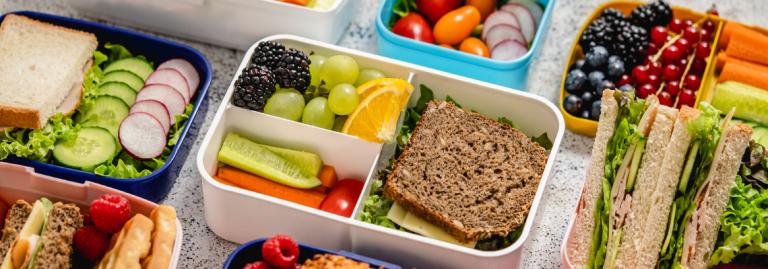
Bringing Food Through Security Screening
Picture this: you're at the airport, your carry-on is packed with your favourite snacks, and suddenly you wonder “Can I actually bring this through security?” You’re not alone. Many travellers have the same question. The good news is that most foods are allowed through security screening. Once you know the basic rules, packing snacks becomes much easier.
Solid foods are a go
Solid foods – like sandwiches, fruit, granola bars, meats, hard cheese and muffins – are allowed in both carry-on and checked baggage.
Keep in mind that while these foods may clear Canadian security, it doesn’t mean they will be allowed at your destination. Some countries have strict rules about bringing in fruits, vegetables, meats, or dairy products. If you're planning to pack more food than you'll eat during your flight, it's worth checking the food import regulations of your destination before you travel.
The 100 ml rule for non-solids
Here’s where things can get a little tricky. Any food that can be spread or poured, such as salad dressing, soup, yogurt, peanut butter or maple syrup, is considered a liquid or gel. These items are restricted to volumes of 100 ml or less each, and all containers must fit in a single 1 L transparent, resealable bag.
This rule also applies to foods that are mashed, pureed or mixed in a sauce (e.g. mashed potatoes, smoothies, chili or stew). For a food to be considered a solid, it must be solid at room temperature.
Powder and granular materials
Bringing flour, spices, or powdered drink mixes? These are allowed in your carry-on, but there's a strict 350 ml/g limit, which is about the size of a pop can. If you need to bring more, pack it in your checked baggage.
Special cases: Baby and medical needs
Travelling with little ones under two years old? You’re allowed to bring baby food, liquid formula, breast milk, water, milk, juice and ice packs – even if they exceed 100 ml. Just be sure to declare them to the screening officer and put them in the bin so they can be screened separately. Similarly, medically necessary gel/ice packs are exempt from the 100 ml rule.
Frozen foods and canned goods
Frozen foods are allowed in your carry-on as long as they stay solid when thawed. If you can pour or spread it once it melts, it needs to follow the 100ml rule. This includes ice. Canned goods are also permitted, but only if the liquid inside is 100 ml or less.
Next time you fly, pack your carry-on like a pro
- Start with solid snacks.
- Place non-solid foods (max 100 ml per container) into your 1 L clear resealable bag.
- Limit powders to a total of 350 ml/g or less.
- Declare medically necessary liquids and gels or those for baby to the screening officer.
What to expect at security
When you reach security, check if your screening line has signage indicating that it has new CT X-ray technology.
At CT X-ray screening lines:
- You can keep your permitted liquids and powders in your carry-on bag.
- Only exempted items (like baby formula or medical liquids) need to be screened separately.
At regular screening lines:
- Remove your 1L liquids bag from your carry-on, along with any exempt items, and place them in a bin.
Remember, solid foods packed in your carry-on can stay there no matter what type of screening line you go through.
What can I bring?
Does your item go in your carry-on or
checked baggage?
My custom travel checklist
Answer a few quick questions and get a personalized packing list that meets airport security rules.